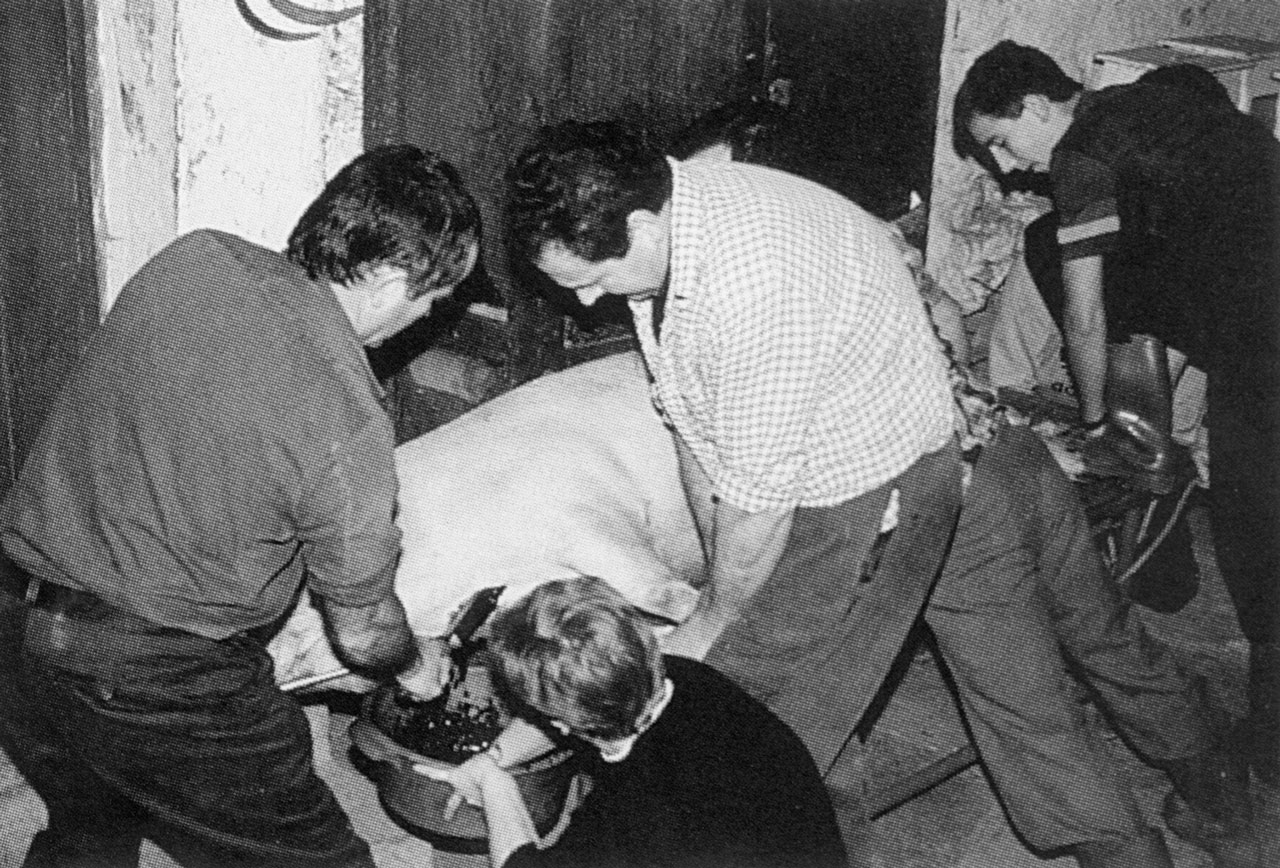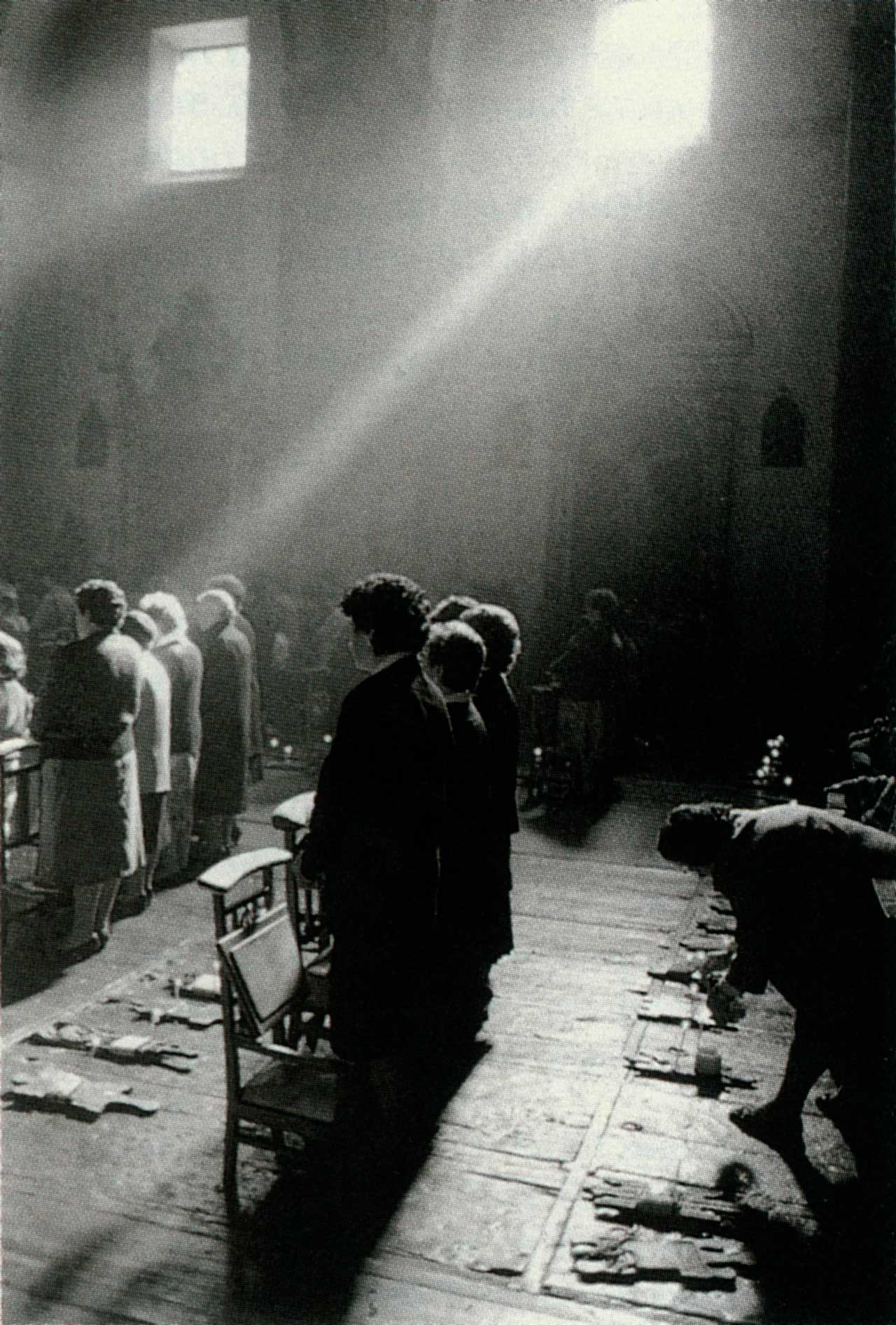Diferencia entre revisiones de «Main Page/en»
De Atlas Etnográfico de Vasconia
| Línea 52: | Línea 52: | ||
====[/atlas/casa/Senar-emazte-zaharrak-eta-gazteak-matrimonios-mayor-y-joven-Areatza-principios-del-siglo-20.jpg|Old and young husband and wife. Areatza (B), beginning of the 20th century. Source: Rubén de Las Hayas’ private archive.|The aim was to ensure that the family wealth, taken to be the farmstead and its belongings, would be passed on in full or only slightly diminished, and improved if possible, from parents to their offspring.||ENLACE]==== | ====[/atlas/casa/Senar-emazte-zaharrak-eta-gazteak-matrimonios-mayor-y-joven-Areatza-principios-del-siglo-20.jpg|Old and young husband and wife. Areatza (B), beginning of the 20th century. Source: Rubén de Las Hayas’ private archive.|The aim was to ensure that the family wealth, taken to be the farmstead and its belongings, would be passed on in full or only slightly diminished, and improved if possible, from parents to their offspring.||ENLACE]==== | ||
| − | ===[alimentacion| | + | ===[alimentacion|Family Diet in the Basque Country|/atlas/alimentacion.png|Food and eating habits in the family, ritual meals, celebrations and lifestyles.]=== |
| − | ====[Alimentacion_domestica_en_vasconia | | + | ====[Alimentacion_domestica_en_vasconia | Family Diet in the Basque Country]==== |
| − | ====[/atlas/alimentacion/Odol-usten.jpg| | + | ====[/atlas/alimentacion/Odol-usten.jpg|Pig bleeding. Source: José Zufiaurre, Etniker Euskalerria Groups.|''Odolosteak ordeaz.''<br /><br /> Neighbours and relatives are given black puddings and other pork cuts as a gift at pig slaughter time. It is an act of courtesy, an expression of the close bond shared with them, and part of an established exchange ritual.|]==== |
| − | ====[/atlas/alimentacion/Erraria-hornada-de-pan-Caserio-Ariztimuno-Onati-1995.jpg| | + | ====[/atlas/alimentacion/Erraria-hornada-de-pan-Caserio-Ariztimuno-Onati-1995.jpg|Bread baking. Ariztimuño Farmhouse. Oñati (G), 1955. Source: Antxon Aguirre, Etniker Euskalerria Groups.|Ogi erre berri, etxe galgarri. <br />''Soft bread at home, an unruly household.''|]==== |
| − | ====[/atlas/alimentacion/Labartoa.jpg| | + | ====[/atlas/alimentacion/Labartoa.jpg|Bushel of maize grain. Source: Ander Manterola, Etniker Euskalerria Groups.|Maize, introduced in the 17th century, and potatoes, in the 19th, would revolutionise the Basque diet.|]==== |
====[/atlas/alimentacion/Dando-brillo-al-pan.jpg|Dando brillo al pan. Fuente: Ander Manterola, Grupos Etniker Euskalerria.|Nolako irina, halako ogia. | ====[/atlas/alimentacion/Dando-brillo-al-pan.jpg|Dando brillo al pan. Fuente: Ander Manterola, Grupos Etniker Euskalerria.|Nolako irina, halako ogia. | ||
Revisión del 12:30 27 ene 2020
Heir of the family. Zeanuri (B), c. 1920. Source: Labayru Fundazioa Photograhic Archive: Felipe Manterola Collection.
House and Family in the Basque Country


House and Family in the Basque Country
The widespread practice in the territories under charter law was for one of the children, either male or female, to continue with the family tradition of keeping up the farmstead and its belongings.
Family Diet in the Basque Country


Family Diet in the Basque Country
Odolosteak ordeaz. Neighbours and relatives are given black puddings and other pork cuts as a gift at pig slaughter time. It is an act of courtesy, an expression of the close bond shared with them, and part of an established exchange ritual.
Juegos infantiles en Vasconia


Juegos infantiles en Vasconia
Honek arrautza ekarri, honek erreten ipini, honek gatza eman, honek pizka bat probatu, honek dena jan! Juego con dedos
Medicina popular en Vasconia


Medicina popular en Vasconia
Osasuna galtzen duenak dana galtzen du. Quien salud no tiene, de todo bien carece.
Ritos del nacimiento al matrimonio en Vasconia


Ritos del nacimiento al matrimonio en Vasconia
Como ocurría con todos los acontecimientos importantes, el banquete de bodas, eztei-bazkaria, se celebraba en casa.
Ritos funerarios en Vasconia


Ritos funerarios en Vasconia
Con las luces que se ofrendaban se alumbraba al alma del difunto. Y los panes le servían de alimento.
Pastando en Eneabe. Zeanuri (B), 1996. Fuente: Archivo Fotográfico Labayru Fundazioa: José Ignacio García.
Ganaderia y pastoreo en Vasconia


Ganaderia y pastoreo en Vasconia
Hace dos milenios Plinio distinguía el Vasconum saltus, húmedo y boscoso, del Vasconum ager con sembrados de cereales y viñedos. Aquella distinción sigue vigente en lo que se refiere a la ganadería.
Agricultura en Vasconia


Agricultura en Vasconia
La selección de semillas ha sido de siempre una actividad fundamental. De cada cosecha se elegía la mejor semilla, para conservarla y utilizarla en la siguiente siembra.








